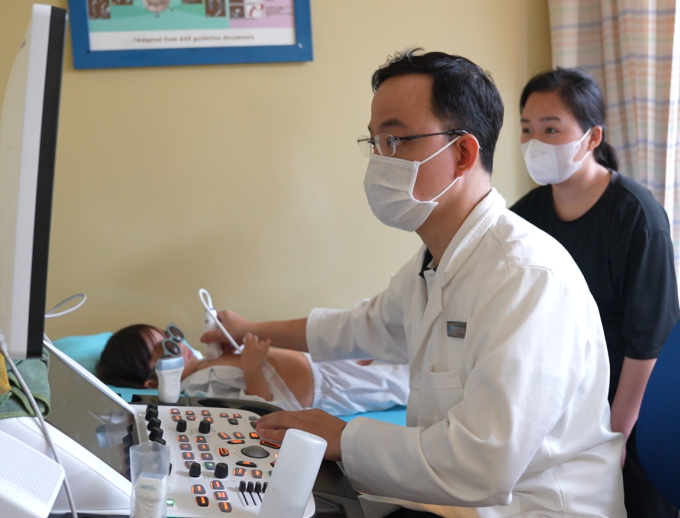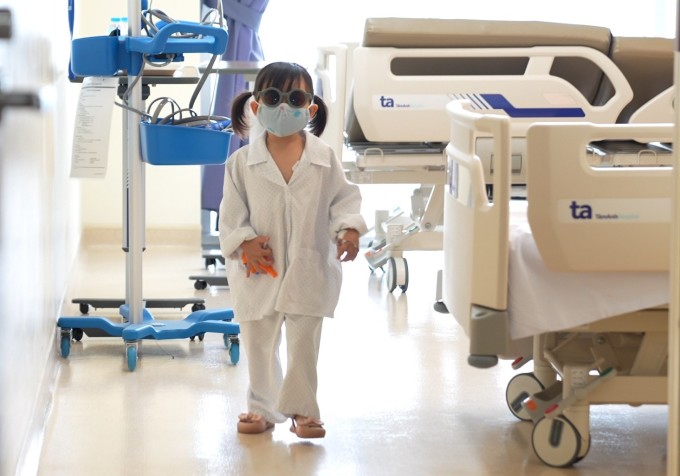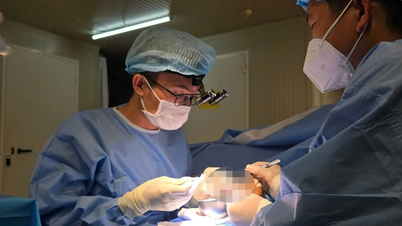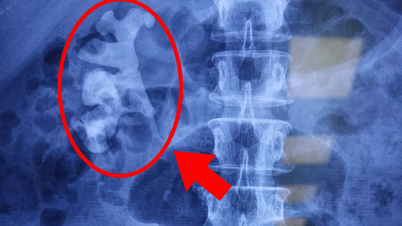The 3-year-old girl developed normally, often got sick, and was tired from running around, so she was taken to the doctor and was diagnosed with a birth defect.
On June 1, Master, Doctor Nguyen Tuan Long (Cardiology Department, Tam Anh General Hospital , Hanoi ) said that Van Anh (3 years old, Hanoi) was found to have a patent ductus arteriosus and was treated by a doctor to close the ductus arteriosus through a catheter, and was discharged after 2 days. This is a congenital malformation with a frequency of about 81/1,000 children born.
The ductus arteriosus exists in the fetus to help the fetus develop normally. After the baby is born, this ductus will close after about a week. However, in some babies, the ductus arteriosus does not close, causing the heart to function abnormally.
In the case of baby Van Anh, the doctor performed a minimally invasive procedure to close the ductus arteriosus under the guidance of a digital subtraction angiography (DSA) system. After the procedure, the baby was pain-free and could move and run normally.

MSc. Dr. Nguyen Tuan Long performs an echocardiogram to check the baby before discharge. Photo: Tam Anh Hospital
Previously, for congenital heart disease, doctors had to operate through the chest or armpit. Now, the technique of closing the ductus arteriosus through a simple catheter is used. This method only opens a very small incision (less than 5 mm) in the thigh, reducing hospital stay time and speeding recovery. Children do not feel pain, can play the next day, reduce the risk of blood infection, and have no incision in the chest area.
Congenital heart disease can have obvious symptoms, but in many cases the symptoms are vague. Van Anh's case is an example. She was born normally, at full term, and has normal physical and motor development. Recently, she has been sick more often, but the family only thought it was a common respiratory illness. The symptom of fatigue when running around is also common in a healthy child.
"If not detected and treated, the baby may suffer from heart failure or other accompanying diseases, reducing quality of life and life expectancy," Dr. Long emphasized.

The girl was able to walk and run just one day after the procedure. Photo: Tam Anh Hospital
Doctor Long said that children will be healthy and normal after having their ductus arteriosus sealed. From 15-30 days after the intervention, children need to do light activities to stabilize the sealing device and take medication for 6 months. After the child's health is stable, they can move like a healthy child.
Dr. Long further explained that congenital heart disease can cause difficulty breathing, cyanosis, and respiratory failure in children immediately after birth. However, some children do not show clinical symptoms. For example, ventricular septal defect, atrial septal defect, patent ductus arteriosus... are often detected through health check-ups or vaccinations.
Children with congenital heart disease often have slow physical development, lower than average weight, and are susceptible to respiratory diseases such as pneumonia...
According to Dr. Tuan Long in developed countries, screening for congenital heart disease is recommended during pregnancy by fetal echocardiography and immediately after birth by measuring SPO2, echocardiography... For older children, echocardiography is also a simple method to help screen and detect early "hidden" congenital heart disease. The ideal time to intervene in congenital heart disease in children is before 2 years old.
Thanh Ba
Source link




![[Photo] Journalists moved to tears at the Memorial Service for the soldiers who died in Gac Ma](https://vphoto.vietnam.vn/thumb/1200x675/vietnam/resource/IMAGE/2025/5/30/9454613a55c54c16bf8c0efa51883456)
![[Photo] A delegation of 100 journalists from the Vietnam Journalists Association visits the soldiers and people of Truong Sa island district.](https://vphoto.vietnam.vn/thumb/1200x675/vietnam/resource/IMAGE/2025/5/30/0984a986227d4e988177f560d2e1563e)























![[Photo] Prime Minister Pham Minh Chinh attends the event "Digital transformation of the banking industry by 2025"](https://vphoto.vietnam.vn/thumb/1200x675/vietnam/resource/IMAGE/2025/5/29/0e34cc7261d74e26b7f87cadff763eae)































































Comment (0)